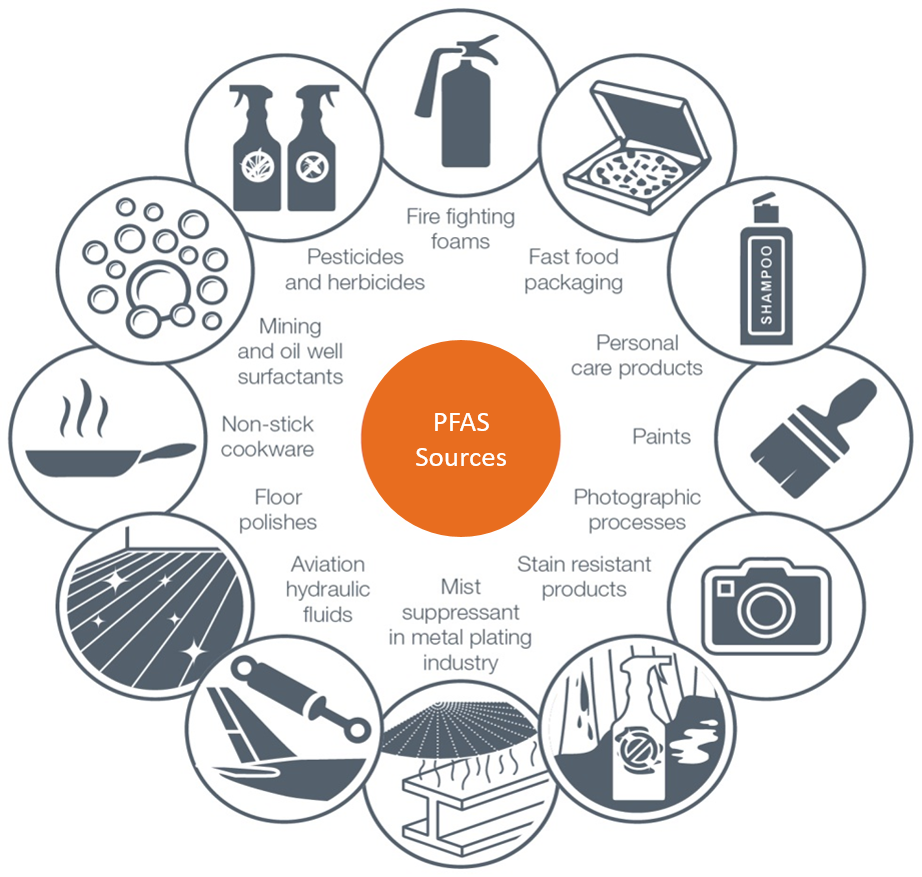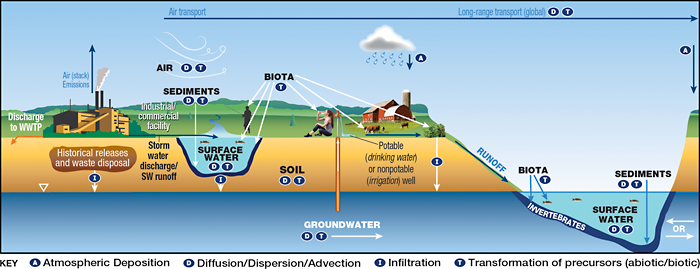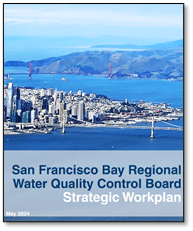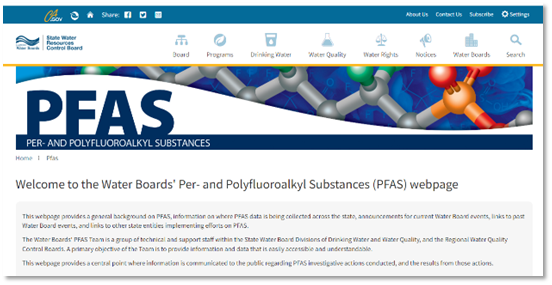PFAS
PFAS Fact Sheet - Click here to Download
What are PFAS?
Per- and polyfluoroalkyl substances (PFAS) are a group of thousands of human-made chemicals with similar chemical structures and unique physical properties. PFAS can repel oil and water, reduce friction, and withstand high temperatures. These properties make them useful in many commercial applications and household products, but also make them unable to breakdown in the environment, which is why PFAS are commonly called “forever chemicals.”

Image Source: Australia Department of Defence
How are people exposed to PFAS?
PFAS are used to make non-stick coatings, water-resistant sealants, stain-resistant fabrics, and less obvious products like some cookware, dental floss, contact lenses, cosmetics and lotions, carpets, upholstery, clothes, ski/surf wax, electronics, and firefighting foam, to name a few.
PFAS can be released from industrial and residential sources and spread through the environment to impact our soil, groundwater, rivers, lakes, and oceans. People can be exposed to PFAS by eating food or drinking water that has been impacted by PFAS, inhaling dust from products or processes that involve PFAS, and by using consumer products that contain PFAS.

Image Source: Interstate Technology Regulatory Council PFAS Guidance, § 9: Site Risk Assessment, Fig 9-2.
Credit: L Trozzolo, TRC
What are the health effects of PFAS?
Toxicity studies show that some PFAS have serious effects on human and ecological health. Some PFAS have been linked to liver, kidney, and heart issues, growth and learning issues in children, fertility issues, increased cholesterol, high blood pressure, immune system issues, decreased response to vaccines, and increased risk of cancer.
What is the Regional Water Board doing about PFAS?
The San Francisco Bay Regional Water Board (Regional Water Board) is working to investigate and regulate sources of PFAS. There is additional information about our actions related to PFAS in our Strategic Workplan. The Regional Water Board coordinates with the State Water Board’s Division of Drinking Water and local water agencies to focus on identifying, investigating, and cleaning up PFAS sources that could impact drinking water or aquatic habitat.
Regional Water Board 2024 Strategic Workplan
What can I do about PFAS?
Individuals can take action to reduce personal exposure to PFAS by learning about how your local water system monitors and treats drinking water for PFAS, using air filters in your home to minimize dust that might contain PFAS, and limiting how much you buy and use products that contain PFAS.
How can I learn more?
State Water Board’s PFAS Website
Below are some useful links to reliable websites that provide more information:
State Water Board:
- State Water Board PFAS Website and the Division of Drinking Water Fact Sheet from May 2024 provide information on actions taken by the State Water Board, Division of Drinking Water, and Regional Water Board.
Department of Toxic Substances Control (DTSC):
- DTSC’s Safer Consumer Products Program identifies types of products that contain potentially harmful chemicals, including PFAS, and evaluates potential safer alternatives.
United States Environmental Protection Agency (US EPA):
- US EPA’s PFAS Website is comprehensive and includes many other PFAS resources including:
- US EPA: What You Need to Know about PFAS provides general information on PFAS.
- US EPA: PFAS Maximum Contaminant Levels Website provides information on federal drinking water regulations.
- US EPA: PFAS Communications Toolkit provides tools for agencies to communicate PFAS information to the public.
Centers for Disease Control and Prevention:
- Agency for Toxic Substances and Disease Registry: PFAS Exposure Site provides information on routes of exposure and how to reduce exposure to PFAS.
Green Science Policy:
- PFAS Central provides a list of PFAS-Free Products.
Local Water Agencies:
Most water agencies have developed websites to provide information on PFAS in drinking water and what actions they are taking. Here are a few examples:
- Santa Clara Valley Water: PFAS Website
- Zone 7 Water Agency: PFAS Website
- East Bay Municipal Utility District: PFAS Website
(Page last updated 6/14/24)
Water is a precious resource in California, and maintaining its quality is of utmost importance to safeguard the health of the public and the environment.




